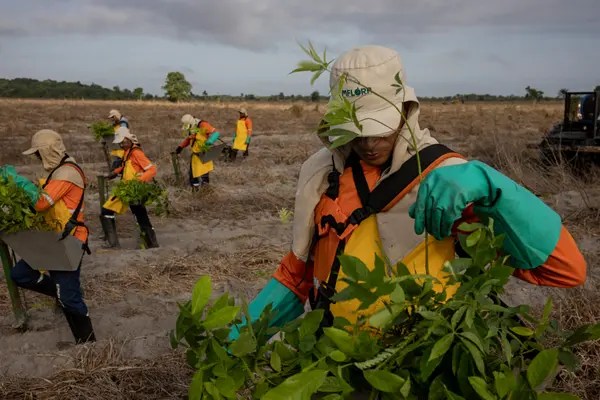
Work by Yuku Mohri at Japan’s pavilion. Moisture from the rotting fruit on display is converted into electric signals, which generate sounds or turn on suspended lightbulbs. Matteo de Mayda for The New York Times
It is the end of the standard work week for many, so here is an art concept to take them into the weekend, thanks to the New York Times art critics:
Japan Pavilion
Given the Venice Biennale’s reputation as “the Olympics of the art world” — set in a spectacular city, no less — artists and curators here often favor grand, weighty gestures. This year’s Japan Pavilion wonderfully eschews gravitas for modesty and play, while still getting at something profound.

Mohri’s work was inspired by the rough and ready materials used to fix leaks in Tokyo’s subway. Matteo de Mayda for The New York Times
For her exhibition “Compose,” curated by Sook-Kyung Lee, the artist Yuko Mohri has created two installations of contraptions-slash-sculptures from local materials. One set, inspired by the D.I.Y. methods for fixing leaks in the Tokyo subway system, features tubes and everyday objects — like pans, rubber gloves and coat racks — rigged together and dangling through the air. The systems catch and recirculate water seeping into the pavilion, sometimes activating chimes in the process. Continue reading →
 We missed Ever Green when it was published last year, but it came to our attention through this essay by one of its co-authors in the current issue of The Atlantic. The essay is about a path to the restoration of hope:
We missed Ever Green when it was published last year, but it came to our attention through this essay by one of its co-authors in the current issue of The Atlantic. The essay is about a path to the restoration of hope:




















